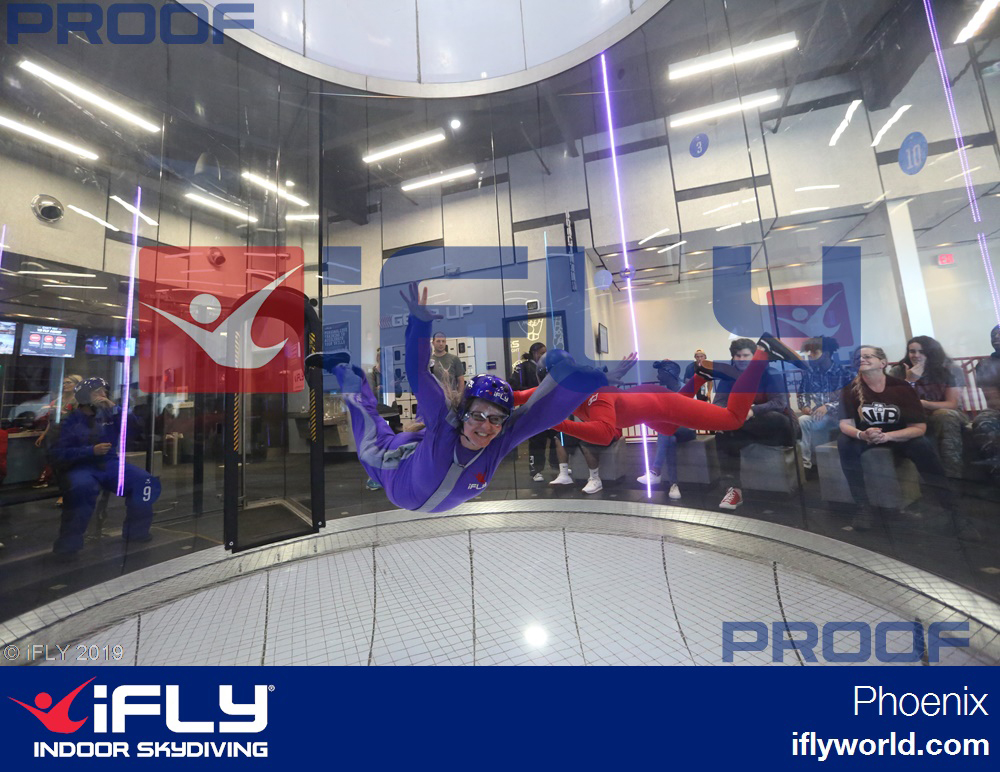• Are you excited to visit iFLY? First, let’s go over what to expect during your field trip.
• You’ll start off by sitting in front of our state-of-the-art wind tunnel. One of iFLY’s science educators will give a brief introduction to the science and engineering concepts involved in the wind tunnel. They’ll do a demonstration of how some everyday objects behave in the tunnel. Then a flight instructor will show you how they use fluid dynamics to do their expert moves. Prepare to see some cool tricks!
• Our class will head to our “lab” to do an activity. Every student will fly at a different velocity, or speed, in the wind tunnel. Your challenge is to predict what your own velocity will be. To do this, you’ll measure your body and do some calculations. Then it’s off to the wind tunnel to see if you got it right!
• Highly-‐trained flight instructors will lead you through a flight and safety training. You’ll learn all the basics that will allow you to have a safe and enjoyable flight. Next, it’s time to gear up and get ready to fly.
• Every student will have the chance to fly in the wind tunnel! Your flight instructor will stay right there with you to make sure you’re safe and having the best flight possible. You’ll be experiencing all the physics for yourself!
• Here are a few STEM concepts to think about before you come…
• Read students the questions on this slide. The answers are given here: Solids have a definite shape and volume. When you apply a force to a solid, it may change its volume, but usually only by a small amount. Examples of solids in this photo: the glass, the table, the ice cubes. Fluids don’t have a definite shape….they take on whatever shape they are contained in. When you apply a force on a fluid it flows around the solid. Fluids may be liquid or gaseous. Examples of fluids in this photo: the air, the soda, the gas bubbles trapped in the soda.
• Read students the ques3ons on this slide. The answers are given here: The two main forces we are concerned with in the wind tunnel are GRAVITY and AIR DRAG. Gravity is the force pulling you down to earth. Drag is the force the moving air exerts on your body. Your size, shape, and the way you hold your body will affect your drag force.
• For a skydiver, terminal velocity is the speed at which the falling diver is no longer accelerating. They are still falling, but they are no longer falling faster and faster. The drag force and gravitational force are balanced. For a flyer in the wind tunnel, the terminal velocity is how fast the air has to move in order to get you off the ground and “float” in the air. When you are “hovering” in the tunnel, we refer to that as your terminal velocity.
• In the demonstration portion of the field trip, you’ll be learning about the frontal area. This is different from the surface area.
• A flyer can increase its frontal area by spreading out their bodies.
• Leave this trick to the experts! This flight instructor has decreased his frontal area by pointing his body straight down.
• Here’s a quick activity to make sure you understand the difference between the frontal area and the total surface area. The frontal area of the basketball is (pi*r^2), where r is the radius of the basketball (This is also the area of a circle with radius, r). The surface area of the entire basketball is (4*pi*r^2).
• What questions do you have about your upcoming field trip? What are you curious about? What do you wonder? Jot these down and the iFLY educators will do their best to answer them when you come!
